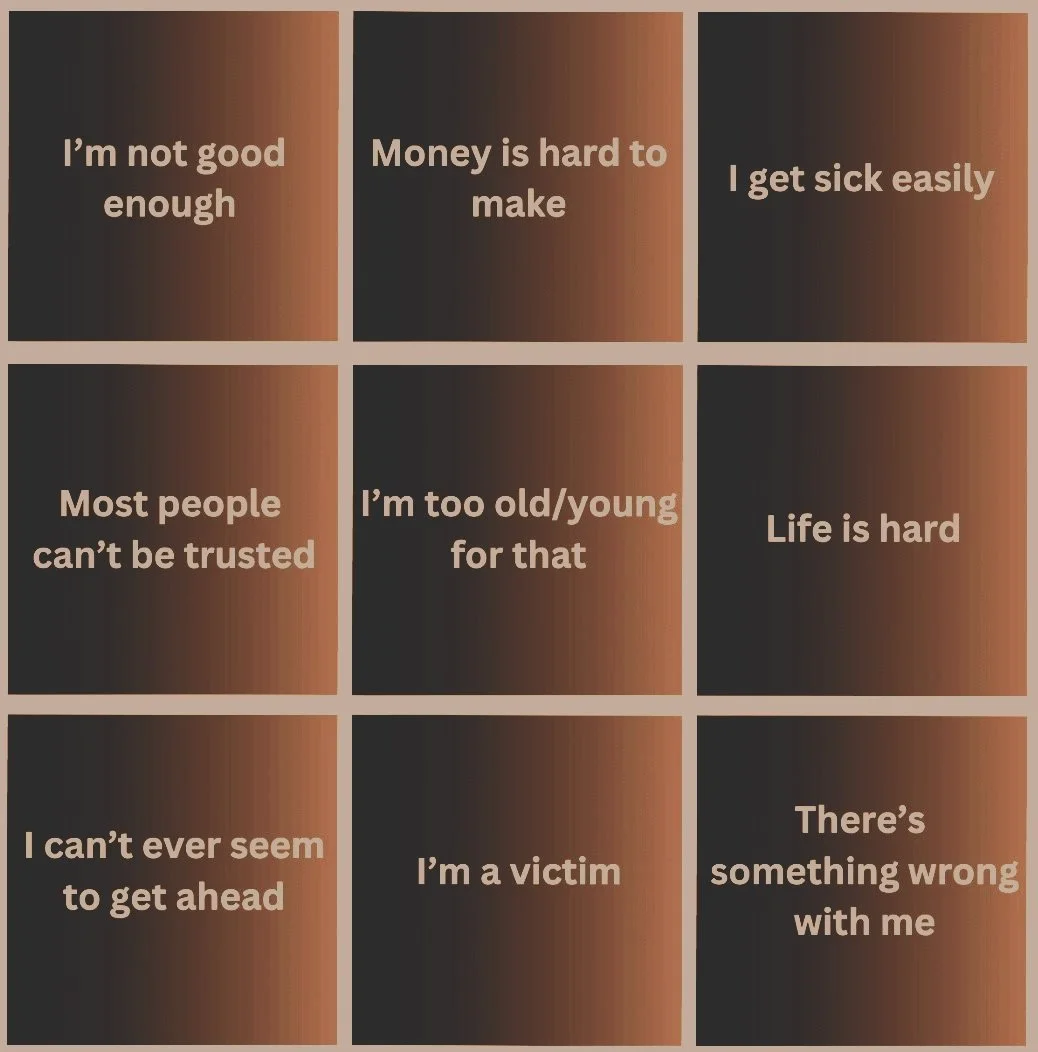Belief Systems
Belief Systems – a set of principles that help us interpret our circumstances; of what is right and wrong, and what is true and false. This is used to make sense of the world and your place in it.
Core Beliefs – our deepest belief systems about ourselves and the world around us. These are inflexible, rigid, and incredibly sensitive to being challenged.
Belief systems are formed in an effort to organize chaos. Our core beliefs about how we see ourselves and our place in the world, are formed by the age of seven. Beliefs are not right or wrong or good or bad (in theory). They also are not your thoughts, feelings or emotions. However they 100% impact our daily living and our quality of life. They are implemented at a very young age, then we live out our lives based upon these beliefs we formed in early childhood.
As we age and change, we unknowingly become stuck in these patterns that impact the quality of our lives.

The point of this work is not to place blame. We aren’t blaming others or ourselves. The goal is to understand the limiting thought patterns we have, so that we can move forward in life.

Belief Systems are complex. Here are some examples of how they can form and manifest in your life:
Example 1
A child grows up in a home where there are frequent explosive arguments. This is followed by hours or days of relative peace, but inevitably more fighting ensues. Because the peacefulness never lasts very long, the child-mind starts to form a belief system:
Peace = Instability
Fighting = Safety
Fighting is the norm, and although it upsets the child, it is more familiar to them than a quiet household is. It is more familiar (and familiarity is often safer) to be around fighting than it is to be around calm and peace.
As they get older, they seek out experiences that feel familiar for them, which means they are drawn to situations that are argumentative. This has turned into a subconscious pattern of behaviour that is difficult to change because the adult mind has a hard time reconciling why they would chose to participate in this behaviour.
Example 2
A small child is at the park with her family and beloved puppy on a sunny summer day. The familiar chime of an ice cream truck plays in the distance, and the child’s excitement for her favourite ice cream treat grows. As the family walks toward the street in anticipation of ice cream, the child lets go of her puppy’s leash, and the dog is fatally hit by the truck.
In an effort to make sense of this tragedy, the child’s mind places the blame on ice cream, and a sub conscious belief system is formed.
Ice Cream = Tragedy
The subconscious belief is that ice cream is dangerous, and as she gets older it manifests in a dairy allergy.



